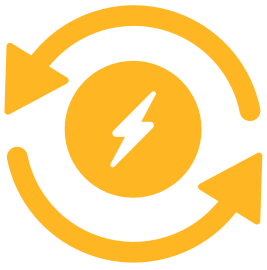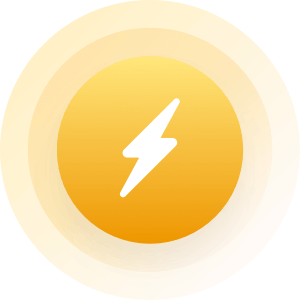Here is the article I promised Lily. I hope it helps. We do have some other choices/control over our last days, besides euthanasia.

You need to look at what the legalities are in your nation.
This is a New Zealand article.
What is “Assisted Dying”?
In New Zealand “assisted dying” is an umbrella term for both assisted suicide and voluntary euthanasia.
The End of Life Choice Act proposes in Clause 19 (2) (a) to legalise four methods of administering a lethal dose:
Two methods are examples of assisted suicide because they are triggered by the person who dies (ingestion; intravenous delivery). Two methods are examples of euthanasia because they are triggered by another person (ingestion through a tube; injection).
“Assisted dying” is a euphemism, along with “end of life choice”, “end of life options”, “dying with dignity”, “death with dignity”, “right to die”, “aid in dying”, and “mercy killing”.
Based on definitions by respected dictionaries, “assisted dying” is equivalent to “assisted suicide”:
According to the Collins dictionary, assisted suicide is “another name for assisted dying” and “assisted dying” is defined as “the suicide of a person with an incurable disease, using a lethal dose of drugs provided by a physician for this purpose”.
Lexico.com defines “assisted suicide” as “suicide effected with the assistance of another person, especially the taking of lethal drugs provided by a doctor for the purpose by a patient suffering from a terminal illness or incurable condition”. It defines “assisted dying” as “the practice whereby a person suffering from a terminal illness or incurable condition is helped to take their own life, especially by means of lethal drugs provided by a doctor for the purpose.”
The use of the word “dying” in “assisted dying” is misleading, because “dying” implies a passive process. Instead, euthanasia and assisted suicide are both intentional acts to end a person’s life.
A Curia Market Research poll found that the majority of New Zealand respondents are confusing “assisted dying” with end-of-life practices that are already legal.
What is the difference between suicide and assisted suicide?
Suicide is intentionally ending one’s own life, for any reason. Literally, “suicide” means “self-killing”.
Assisted suicide is intentionally ending one’s own life, for any reason, with the help of someone else.
In New Zealand it’s not illegal to end one’s own life (suicide). However, it is illegal to encourage or help someone else to end their life (assisted suicide), according to Section 179 of the Crimes Act.
It is also a crime to deliberately end someone else’s life (murder or manslaughter), even when the person has requested it. Consent is not a legal defence.
Suicide is not a crime in New Zealand, because society recognises that people who try to kill themselves need care and treatment, not punishment. The fact that it’s not a crime doesn’t mean society condones suicide. As a case in point, the Ministry of Health is currently implementing the New Zealand Suicide Prevention Strategy (2019 – 2029).
Legal medical practices
A patient can legally:
refuse or stop medical tests and treatment
make a ‘do-not-resuscitate’ order (It means that a person doesn’t want CPR if their heart and/or breathing stop).
refuse to be on life support (‘be kept alive by machines’)
A person can make these decisions in advance by completing an Advanced Care Planning form.
A doctor can legally:
switch off life support (‘pull the plug’)
stop treatment that has become futile or overly burdensome to the patient
give a patient as much medication as needed to control their pain and other symptoms
It’s important to remember that people can build up tolerance for pain drugs such as morphine. If the dosage is increased gradually, they become able to handle amounts that would kill other people instantly. It’s a myth that drugs such as morphine necessarily shorten life. Yes, a too high dosage can cause death. However, many medical treatments and procedures involve a risk of death. Knowing about the risk is not the same as causing death intentionally. Say a patient died while getting heart surgery, which involves a high risk of death. If the doctor killed the patient intentionally on the operating table, or if the doctor was not careful enough, he or she would be at fault. However, if the doctor didn’t intend to kill the patient, but the patient died as a side effect of the operation, the doctor would not be at fault.So it is with medication given to the terminally ill. There is a risk of death if patients receive medication such as morphine in too high dosages or too frequently. If the doctor gives the medication carefully, gradually and in proportion to symptoms, and the patient dies, the doctor has not committed a crime. It would not be euthanasia, because the doctor’s intention was to manage symptoms, and not to kill.
sedate a patient to make them comfortable
Dr Paul Dunne is a senior palliative care specialist with 20 years’ experience treating a total of about 6000 patients. He claims that all pain can be controlled. He says that only three or four of his patients per year have pain that is very difficult to treat and they need medication to the point of being unconscious in order to give them a comfortable death. (See 1’45” onwards on this video interview)
What is Euthanasia?
The legal medical practices mentioned above are not euthanasia. Euthanasia is illegal in New Zealand.
Why is euthanasia ethically different from other legal practices that also result in a patient’s death, such as a ‘do not resuscitate’ order, switching off life support, or withdrawing futile treatment? These practices allows the person to die of natural causes – from their underlying medical condition. For example, say a man suffers a heart attack. If he chose not to be resuscitated, he will die naturally from that heart attack, without someone trying to prolong his life.
The same applies when further treatment is stopped or when life support is switched off. The person would die of natural causes – from their underlying medical condition – and at a time when their body is unable to sustain life naturally.
Euthanasia is different, because it is not a death of natural causes. A euthanised person does not die from their underlying medical condition, but from a lethal drug that is either ingested or injected. The person would die before their natural death, at a time when their body can still sustain life. See here for a detailed discussion with diagrams.
Euthanasia is the intentional ending of someone else’s life who is regarded better off dead.
The judgement that a person is better off dead is usually made by the patient, but can also be made by doctors, nurses, relatives, caregivers or sometimes agents of the State.
The most common euthanasia method is the lethal injection.
Euthanasia is not necessarily performed on dying or terminally ill people. There are several cases in which the person still had years, or maybe even decades, to live.
Euthanasia can occur with the patient’s request (voluntary euthanasia) or without the person’s request. Only voluntary euthanasia is permitted by overseas legislation and advocated in New Zealand. However, in Belgium and the Netherlands where voluntary euthanasia is legal, euthanasia without request has unfortunately become an accepted practice. However, since euthanasia is defined as a practice that meets the requirements of the law, what the rest of the world would call “euthanasia without request” they describe as “life-ending acts without explicit request (LAWER)” or “termination of life”. More details to be added soon.
http://euthanasiadebate.org.nz/assisted-dying-assisted-suicide-and-voluntary-euthanasia/
.
Edited by
Unknow
on Sat 11/28/20 06:16 PM









